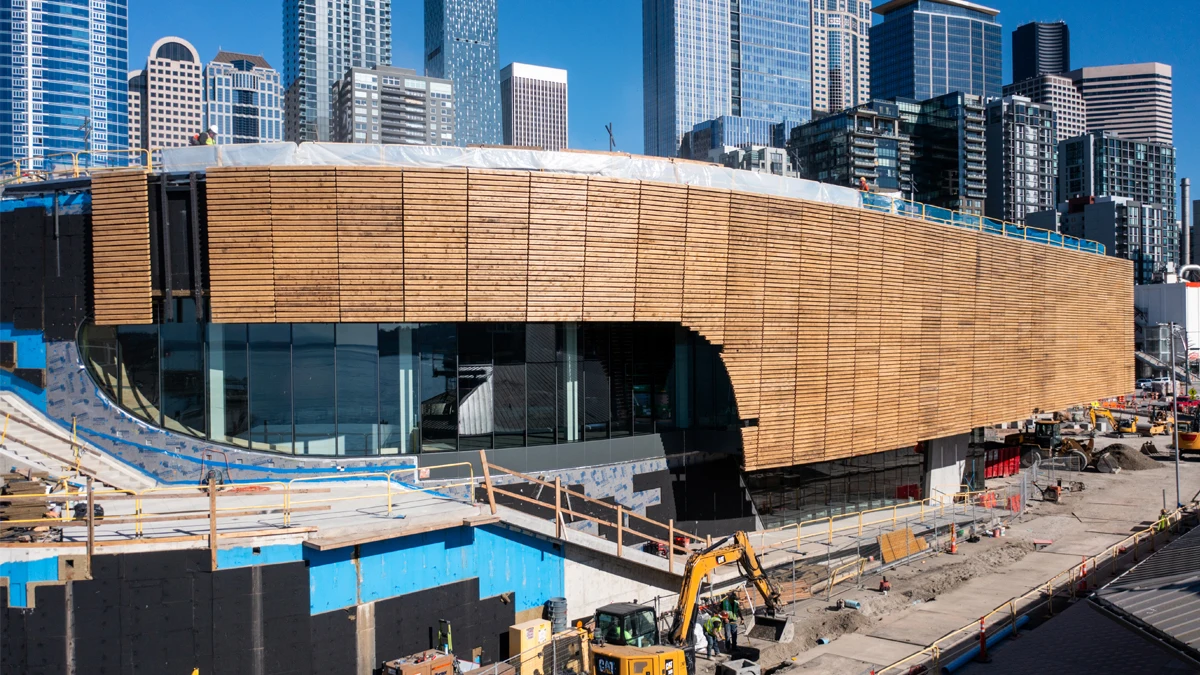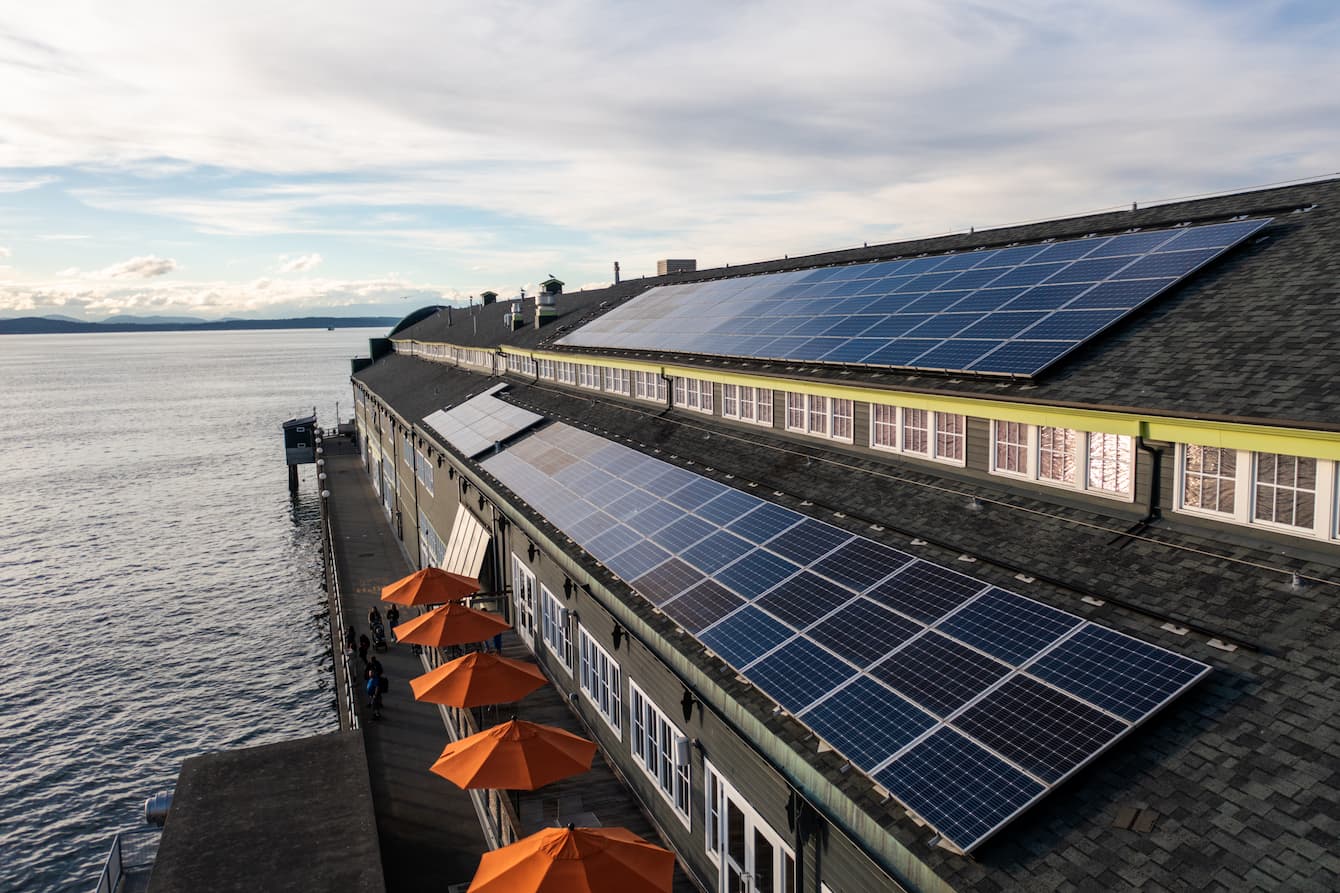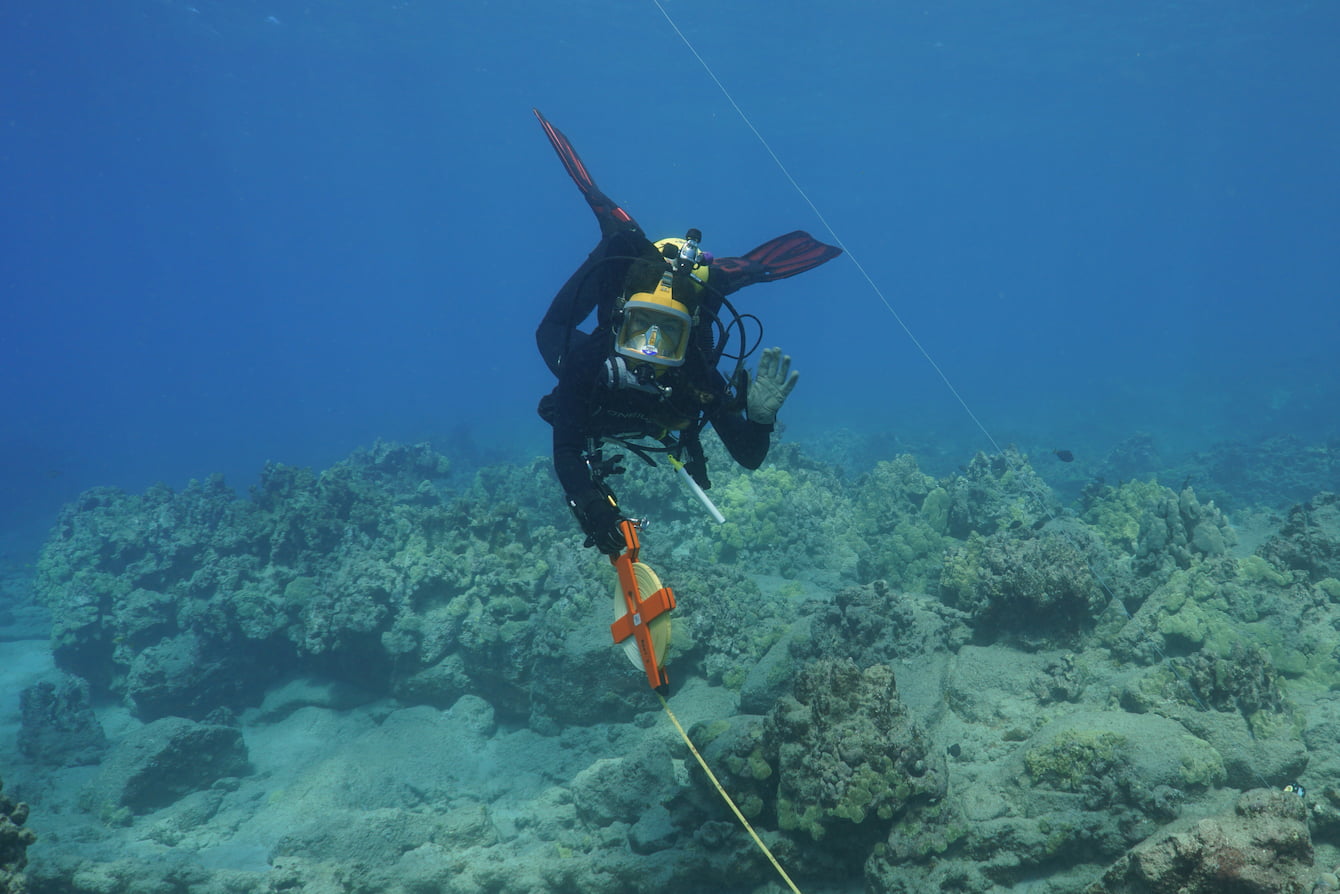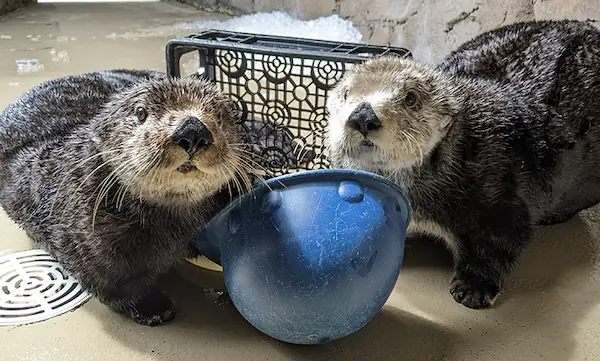This summer, the Seattle Aquarium’s campus will expand when our new Ocean Pavilion opens.
As we began this project, we asked ourselves a key question: How can a technically complex building like an aquarium—which must keep animals healthy 24 hours a day, 365 days a year—model sustainable design?
Navigating that answer has spanned years and included architects, regenerative designers, engineers, builders, animal experts and many others! Dive in with us:
The Ocean Pavilion’s sustainability features
When it’s complete, the Ocean Pavilion will be owned by the City of Seattle. It will serve as a living laboratory dedicated to ocean health. With that in mind, we designed the building to use energy, water and materials efficiently and with care. The Ocean Pavilion will:
- Operate 100% fossil fuel free.
- Recirculate 96% of the salt water in its habitats—meaning that once water enters the building from Elliott Bay, it remains in the building.
- Recapture heat from the warm-water habitats to warm the building.
- Feature carefully chosen materials, like the Alaskan yellow cedar exterior panels on the building’s west face, which are Forest Stewardship Council-certified and come from an Indigenous-led company.
- Use large windows to reduce the amount of electricity needed for indoor lights.
- And much more!

Explore salt water in the Ocean Pavilion: The Ocean Pavilion’s saltwater habitats are what’s called a “closed-loop” system. Watch our video to learn more:
Get nerdy with us: Learn how our Water Quality team uses science to maintain healthy saltwater habitats.
What “green building” certifications is the Ocean Pavilion pursuing?
The Ocean Pavilion will be LEED Gold-certified. We’re also targeting Zero Carbon Certification from the International Future Living Institute (ILFI), which includes requirements beyond LEED.
The ILFI is a global nonprofit that certifies advanced sustainable and regenerative buildings. ILFI Zero Carbon Certification is a rigorous international standard for buildings that are highly energy efficient and have fully neutralized their carbon emissions, meaning that they do not add any net carbon to the atmosphere.
Earning this certification requires neutralizing both operational and embodied carbon:
- Operational carbon comes from emissions required to heat, cool and power the building.
- Embodied carbon is different. It refers to emissions generated by raw material extraction, manufacturing, transportation and installation of building materials (in other words, the emissions generated by creating the building’s materials and constructing it).
Zero Carbon Certification requires us to offset 100% of the building’s operational energy use with new renewable energy. Some buildings meet this requirement by adding rooftop solar panels, but our rooftop will be a space for the public to enjoy. So, instead we’re working on an agreement that will add additional renewable energy capacity to Seattle’s electric grid.
The best part? This additional capacity will meet our needs and provide additional renewable energy that others can use. Stay tuned for more details on that step.

Many green building experts consider ILFI certifications like Zero Carbon Certification to be especially challenging. Why? They’re based on actual performance over 12 consecutive months—not plans or estimates. We’re proud to be the first aquarium building in the world to pursue an ILFI certification. We hope to be the first of many.
A growing number of organizations are adopting this certification:
- Climate Pledge Arena here in Seattle (world’s first arena to be certified)
- Google’s 6 Pancras Square office in London (world’s first building project to be certified)
- Microsoft’s Puget Sound and Silicon Valley campuses (pursuing certification)

Why the focus on carbon?
We all impact the ocean through our actions. The Aquarium is no different!
Too much carbon in the atmosphere is warming the ocean and planet. These changes are wreaking havoc on delicate ocean ecosystems. As coastal storms intensify and seawater levels rise, human communities are feeling the impacts too.
Since 2012, the Aquarium has been carbon neutral, meaning that we’ve offset any emissions we’ve produced so that we don’t add net carbon to the atmosphere. And since 2014, we’ve offset more carbon than we emit for scope 1 and 2 emissions. In 2020, we took that further by also offsetting more than we emit for select scope 3 emissions. (Learn more about scope 1, 2 and 3 emissions on the EPA website.) When purchasing carbon offsets, we work with a climate consultant to select options that are third-party verified and align with our values.
Plans are in the works to revitalize the other buildings on the Aquarium’s campus—and we’ll continue challenging ourselves to meet tough green building standards. This goal complements the work we’re doing every day to conduct marine conservation research, advocate for ocean-friendly policies, rescue animals, provide exceptional animal care and restore endangered species—all of which are possible with support and engagement from our community members—like you!




